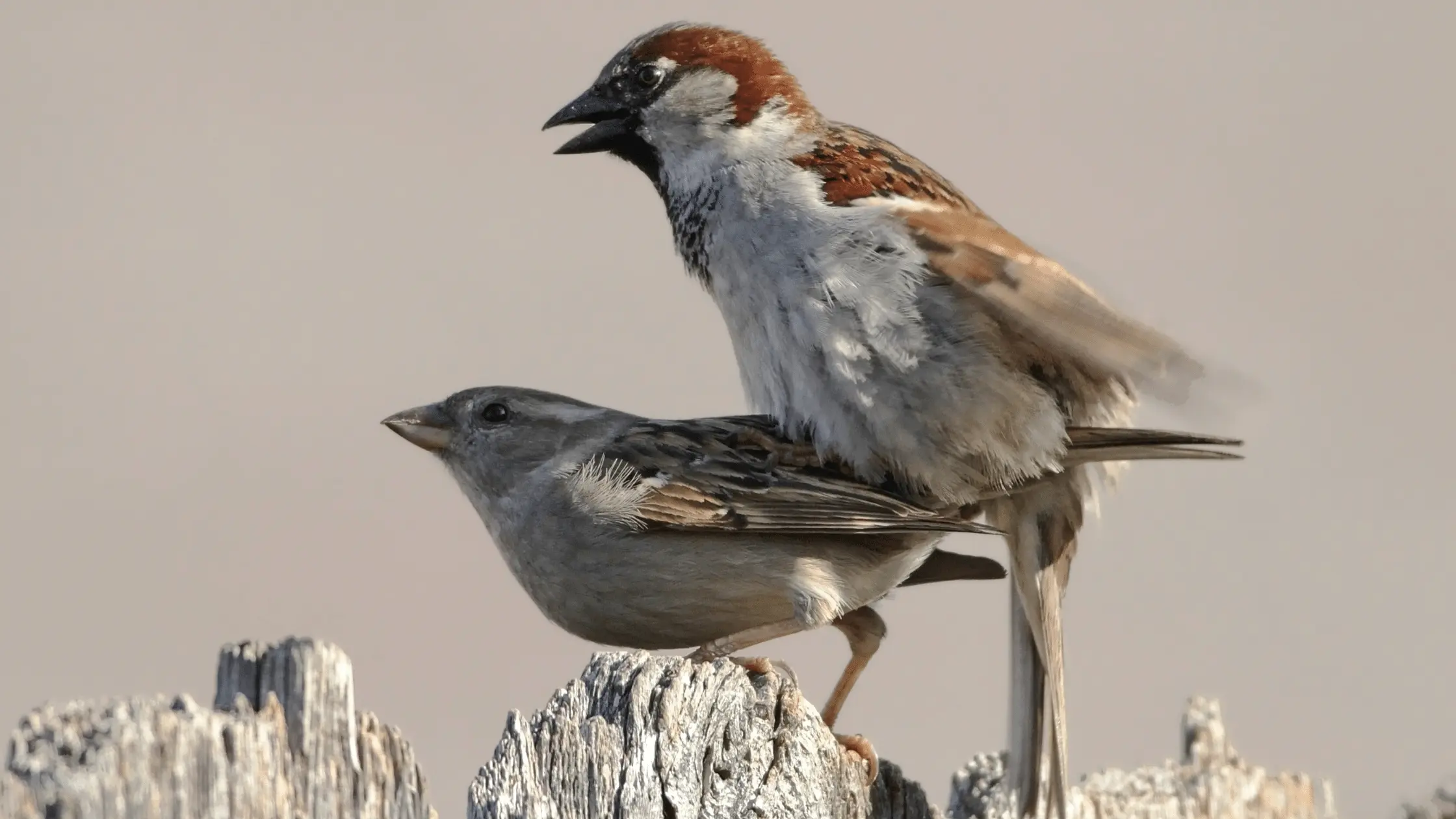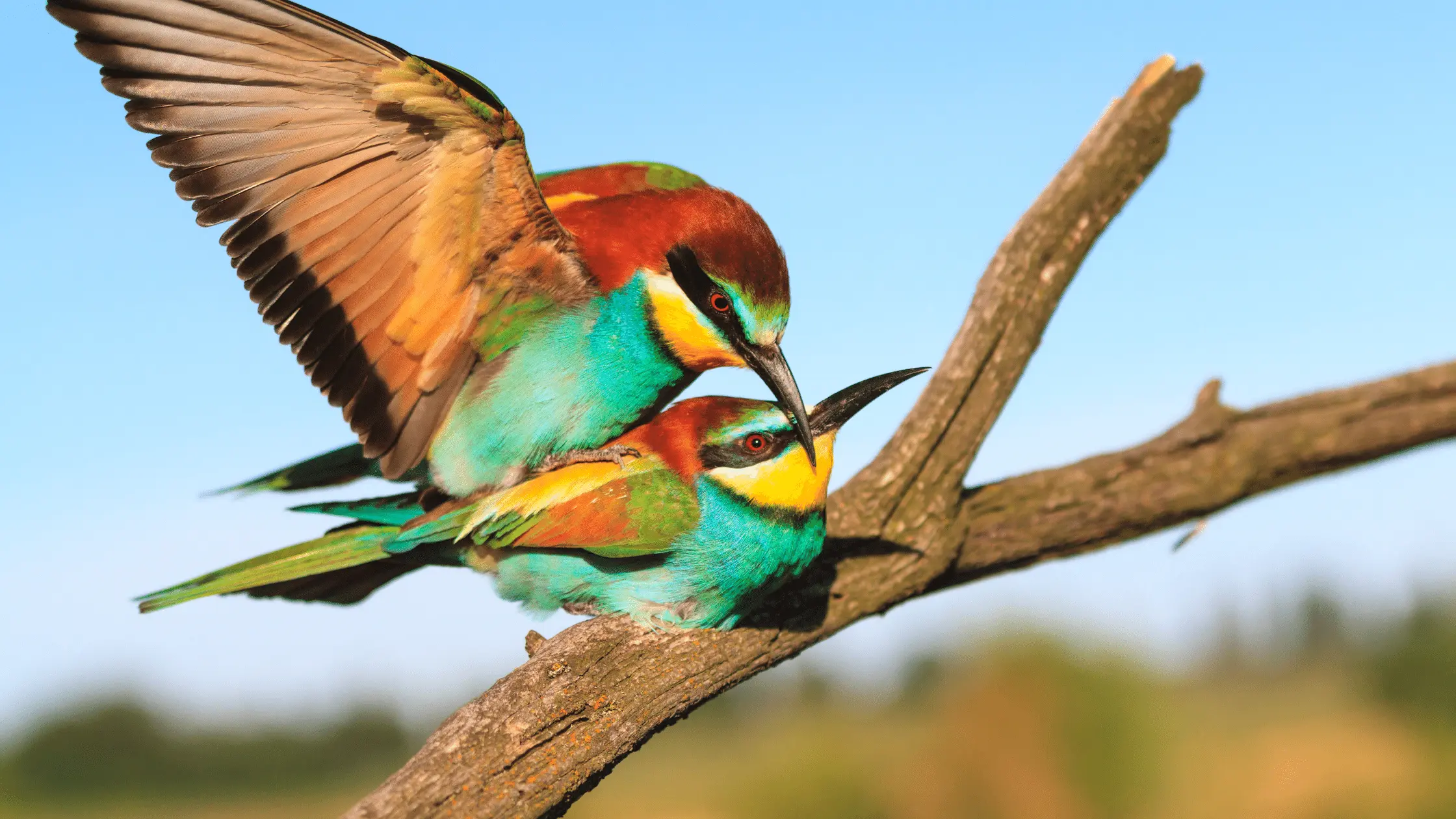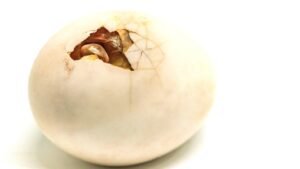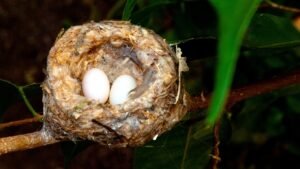The fact that birds even have a mating process is something so fascinating. But reproduction is a vital process needed for the continued existence of most (if not all) living species, and birds are not excepted.
If you have been watching birds for a while, you will discover that they have quite a lot of display rituals that they carry out during reproductive seasons.
This article will cover all you need to know about how these creatures mate and their typical behavior during mating season.
Reproductive Process in Birds (Explained!)
Other than birds like swans and ducks with actual penises, most birds mate via a cloacal kiss. Most male birds do not have a penis; thus, both male and female birds in most species use their cloacas for mating.
When birds are ready to reproduce, the ovaries of the female and the testes of the male will then swell and produce ova and sperm, respectively. The males store their sperm in their cloaca until they find a mating partner. Once the female receives the sperm in their cloaca, they can then send it into their body for fertilization.
Courtship Behavior In Birds
Depending on the bird, several behaviors entail a breeding season. For some species, the male first claims a territory during the breeding season and goes ahead to woo females via a series of displays. These behaviors could range from loud chirps in the morning to special flight patterns and other elaborate rituals.
At this point, a male indicates his interest in available females by showing strength. Female birds often pay attention to their mates, as they often want to lay healthy and strong chicks with good chances of survival.
Actual Mating Process

The male bird would mount the female from behind and balance on her back. At this point, she moves her tail to the side, and they touch their cloacas together for a second. During this quick moment, the male releases his sperm cells into the female cloacas.
In most cases, the birds repeat the process to increase the chances of fertilization. Research shows that only about 1-2% of ejaculated sperm reaches the internal part of the female cloaca. Thus, these birds repeat this process more than once to ensure a fertile mating process.
Post-Mating Behavior
Once fertilization occurs, the female starts producing eggs in a few days or weeks. Unlike humans, female birds can hold on to sperm until they find the perfect nest condition.
The courtship process in birds can sometimes last longer than the mating period. However, this is dependent on the species. For example, a male hummingbird would leave a female after mating and mate with other females in his territory. Females take care of their eggs. At the same time, birds like parrots and bald eagles stay with their partners even after mating, and they mostly raise families together and mate for life.
Mating In Birds Without Cloacas

As disclosed earlier in this article, some bird species do not have cloacas. These birds are ducks, geese, swans, kiwis, and many others. They have penises that they insert into their female counterparts when mating. Their penises are extensions of their cloacal walls, allowing these birds to mate even while in water without losing the sperm to the water. The overall nesting process is almost the same for all birds, irrespective of their mating pattern. When the brooding begins, the female stays in her nest most of the time, incubating these eggs to ensure they hatch healthily.
FAQs About Mating In Birds
Do some birds mate with different species of birds?
Sometimes, a bird can mate with other birds. However, this is only possible within related species. Birds of different species will be incompatible reproductively, so they cannot breed. Moreover, every species has a unique reproductive feature.
What does a cloaca look like?
The cloaca is beneath the tail of birds and is often covered with feathers. Depending on the bird, a cloaca can appear pinkish or even peach-like. It is a multipurpose organ that birds use for both excretion and reproduction.
Is it okay to watch birds mate?
It can quickly become embarrassing when you realize that two birds are going through a mating process. However, the mating process is quite speedy, so it only lasts for a few seconds.
Mating is a private affair to most species, so it is better to keep your distance when you discover these creatures are at it. Approaching the birds will cause distraction and thus force them to cut off their bond. This action can cause complications in the mating process and even lead to infertile or incomplete mating.
How Frequently Do Birds Mate?
The frequency of mating in birds depends on their species. Most birds mate only once during the breeding season; others breed multiple times and have lifelong mating partners.





